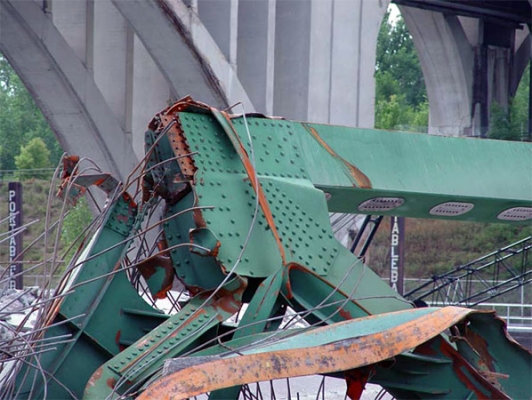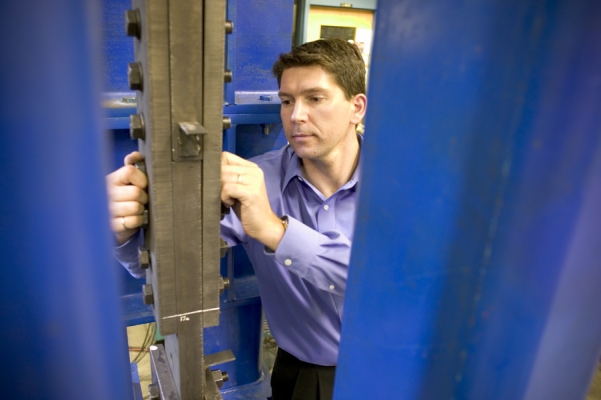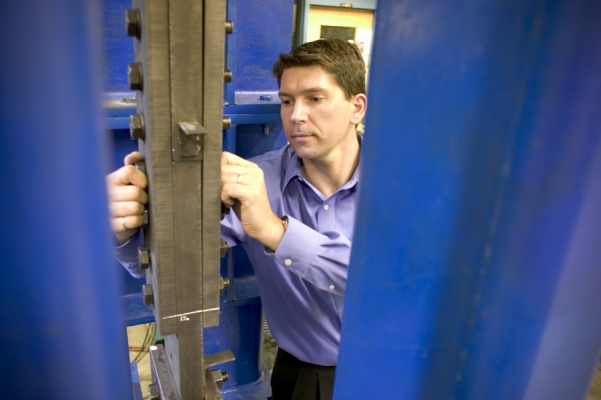An OTREC research project recently took a look at gusset plate connections, the riveted plates of sheet metal that hold steel truss bridges together.
These connective plates have come to the attention of the Federal Highway Administration (FHWA), because in 2007 the collapse of the Interstate-35W Bridge in Minneapolis was the result of a failed gusset plate.
After the collapse, which killed 13 people and injured 145, the FHWA issued a set of guidelines for load rating — or determining the weight-bearing capacity — of gusset plates.
Historically, only bridge truss members were considered for load rating during safety inspections. Gusset plates were thought to be reliable based on conservative assumptions employed during their design.
For more details, visit the project page.
Roughly 20,000 steel bridges in the United States are classified as non-load-path-redundant, or fracture critical, bridges. This means that the failure of a single truss member or connection could lead to collapse.
The problem, says the project's lead investigator Christopher Higgins, happens when a plate goes out of plane. It’s supposed to be perfectly flat, but with too much load put on it, it can develop a bifurcation and go from stable to unstable.
“It’s...
Read more




